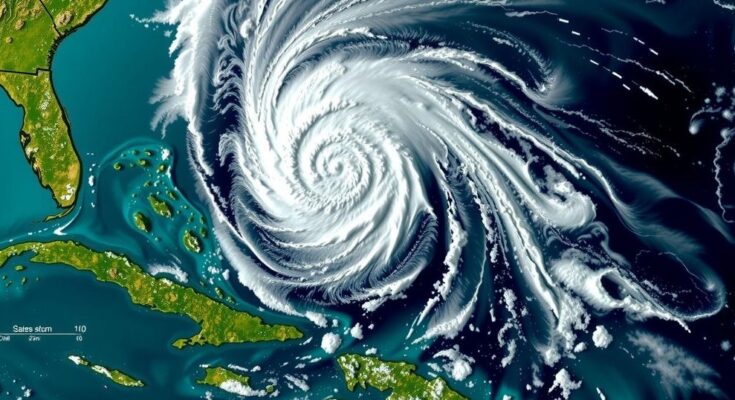The 2024 Atlantic hurricane season ended with 11 hurricanes, surpassing the average of seven. This active season featured storms that caused significant destruction and fatalities hundreds of miles from their landfall locations. Notable storms included Hurricane Beryl, which became the earliest Category 5 hurricane, and Hurricane Helene, which inflicted catastrophic damage, making it the deadliest storm since Hurricane Katrina. The season’s unusual activity is linked to rising ocean temperatures due to climate change.
The 2024 Atlantic hurricane season concluded on Saturday, marking an exceptionally active year with 11 hurricanes—significantly above the average of seven. This year’s storms wreaked havoc across numerous regions, causing fatalities and extensive property damage far from their landfall sites. Meteorologists characterized this season as a “crazy busy” period, notably influenced by warmer ocean temperatures. Eight hurricanes made landfall in areas including the U.S. Gulf Coast, Bermuda, Cuba, the Dominican Republic, and Grenada.
Among the standout storms, Hurricane Beryl emerged as the first Category 4 hurricane documented to occur in June, striking Carriacou, Grenada, prior to causing destructive repercussions in Jamaica. This event was particularly unusual, as Brian McNoldy, a hurricane researcher at the University of Miami, noted the rarity of a Category 4 hurricane impacting Jamaica since Hurricane Dean in 2007. Subsequently, Beryl escalated into the earliest recorded Category 5 hurricane in the Atlantic on July 1, deviating from the historical trend of major hurricanes forming post-September 1.
In September, Hurricane Helene inflicted severe destruction across the southeastern United States and claimed over 200 lives, making it the deadliest storm since Hurricane Katrina in 2005. North Carolina alone assessed damages reaching $48.8 billion, affecting residential areas and critical infrastructure. Other states, including Florida, Georgia, South Carolina, Tennessee, and Virginia, also sustained significant devastation.
Hurricane Milton followed in October, achieving maximum wind speeds of 180 mph, marking it as one of the most powerful hurricanes recorded in the Gulf of Mexico, surpassed only by Hurricane Rita in 2005. The precipitation levels in the areas affected by Helene and Milton surged to three times normal rates, with Asheville, Tampa, and Orlando experiencing their wettest two-month periods recorded.
In November, Hurricane Rafael reached wind speeds of 120 mph, nearly setting a record for the strongest November hurricane in the Gulf, as it impacted Cuba, which was still recovering from Hurricane Oscar’s recent devastation. The escalating global temperatures attributed to greenhouse gases are increasingly facilitating the formation of intense hurricanes in atypical times and locations. McNoldy emphasizes that although one should not directly attribute specific weather events to climate change, it indeed plays a role in making such extreme occurrences more probable.
This hurricane season illustrated unprecedented events, including the formation of historically strong storms at atypical times, highlighting the broader implications of climate change on weather patterns and hurricane intensity.
The article discusses the conclusion of the 2024 Atlantic hurricane season, providing a comprehensive overview of the season’s unprecedented activity characterized by 11 hurricanes. Not only did these storms impact areas where they made landfall, but they also caused widespread destruction and loss of life across several states in the southeastern United States. The article contextualizes this season within the framework of climate change, explaining how rising ocean temperatures contribute to the increased frequency and intensity of hurricane activity, with emphasis on the experiences of specific storms such as Beryl, Helene, Milton, and Rafael.
In summary, the 2024 Atlantic hurricane season was noted for its unusual activity, featuring 11 storms and extensive destruction across numerous regions. The phenomenon of warmer ocean temperatures plays a significant role in this surge of hurricane activity. With predictions for increasingly severe weather events linked to climate change, it is essential to consider the implications of such trends for future seasons. The season was a stark reminder of the growing challenges posed by extreme weather phenomena.
Original Source: www.arkansasonline.com




